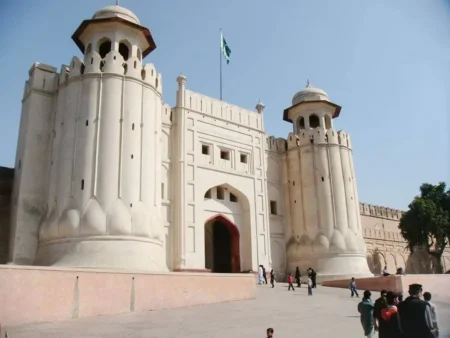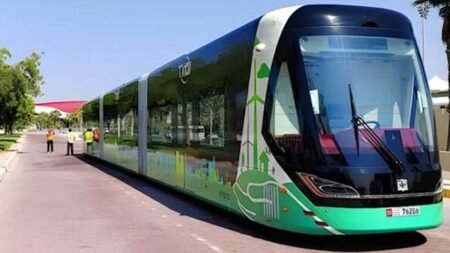Written by. Ch. Faisal Mahmood
Bhambore or Banbhore is an ancient city on the northern bank of Gharo Creek, about 65 km east of Karachi in the Thatta District on the N-5 National Highway between Dhabeji and Gharo.
Preliminary excavations in the area were first done by Ramesh Chandra Majumdar in 1928 and later by Leslie Alcock in 1951. Pakistani archeologist Dr. F.A. Khan conducted extensive studies and excavations on the site from 1958 to 1965. The Port of Banbhore was submitted for induction into World Heritage Sites by the Department of Archaeology and Museums of Pakistan in January 2004. It is currently in the tentative list under the criteria iv, v, and vi of the cultural category.
In March 2012, the Culture Department of the Government of Sindh organized the first International Conference on Banbhore, at which different experts and archaeologists presented their research on the site.
The site conceals the remains of a settlement of a considerable size. It is divided into two parts:
- a well-fortified citadel area measuring over 2000 feet from east to west and 1200 feet from north to south, and
- an outer un-walled city extending over a large area on the north and east round ancient lake. This part includes an industrial area and an ancient graveyard on its outskirts.
Some archaeologists and historians suggest that Banbhore is the historical city of Debal, which the Arab general Muhammad bin Qasim conquered in 711-712 after defeating Raja Dahir, the last Hindu ruler of Sindh. However, this identification has not yet been confirmed, though numerous research and excavation works have been carried out to link the two cities. Banbhore may also have been the ancient cities known as Barbari or Barbaricon but it has not yet been proven that these historical cities are the same. [Barbarikon was the name of a seaport near the modern-day city of Karachi, Sindh, Pakistan, important in the Hellenistic era in the Indian Ocean trade. It is also a Greek version of the term Barbaricum, designating areas outside civilization and/or the Roman Empire].
Archaeological findings show that the city consisted of an enclosed area surrounded by a stone and mud wall. The citadel was divided into eastern and western sections by a fortified stone wall in the center. The eastern part contains ruins of a mosque with an inscription dating to 727 AD, sixteen years after the conquest of Sindh, indicating the best-preserved example of the earliest mosques in the region. The remains of the mosque were discovered in 1960. Remains of houses, streets and other buildings have been found both within and outside the citadel. Contemporary stone buildings from the three periods are also uncovered in the area including a palatial stone building with a semi-circular shape, a Shiva temple from the Hindu period, and a mosque. Three gateways to the citadel were also uncovered during excavations.
In the medieval period, Banbhore was a port city deriving its wealth from imported ceramic and metal goods, the industrial sector, and trade. The city was strategically located at the mouth of the Indus, linking it with the rest of the Scytho-Parthian Empire and international traders in the Indian Ocean. Archaeological findings show a half-submerged anchorage structure with solid stone foundation, which may have been used for berthing cargo boats. However, the port was abandoned when the Indus river shifted its position and the creek was silted.
The Hindu, Buddhist, and other period being comparatively poor, deep digging at half a dozen points have provided an almost complete cross-section of the mound from top to bottom, revealing the remains of three distinct periods:
- The Scytho Parthian (1st century B.C to 2nd century A.D)
- Hindu Buddhist (2nd century B.C to 8th century A.D)
- Islamic Period (8th century B.C to 13th century A.D)
The city remained under occupation until 13th century when its importance started diminishing due to shifting of the course of river Indus and it was gradually deserted. The buildings collapsed and the whole city turned into the shape of a huge mound.
Though there is no cultural break during the long period of occupation from the eight to the thirteen century A.D., four distinct phases, roughly corresponding with four building period of the defense wall, are clearly traceable. The earliest phase assignable, on the basis of ceramic and other evidence, to the Umayyad period, the imposing defense system of the citadel owes its origin to this period.
Contemporary stone buildings are characterized by massive solidity and strength of the Islamic period, uncovered during first two seasons. The most remarkable is a Palatial Stone Building of semi-circular shape which was provided with lime plastered floors, a fine stepped entrance and a large circular well inside. The most important being the great Mosque of the sub-continent.
So far three gateway of the citadel have been uncovered. The Eastern Gateway overlooks the lower city and connects the citadel with ancient lake on its northeastern corner by flight of badly preserved broad steps. The other two gateways with flights of finely dressed large stone stabs are well preserved.The Southern Gateway overlooking the creek is an imposing structure. It is flanked by two solidly built semi circular bastions.
The structure which now lies half-submerged in water on the bank of the creek, in front of southern gate, has a solid and deep stone foundation. These might have been used for berthing cargo-laden riverboats or small sea crafts.
The Department of Archaeology and Museums, Government of Pakistan, established a site Museum named Archeological Museum Banbhore. Its foundation stone was laid on 21st August 1960, by Mr. Mumtaz Hassan Esqr, Sitara-i-Pakistan, Germany’s Knight Command of the Order of Merit Germany and Deputy Chairman Planning Commission, Government of Pakistan. He formally inaugurated this museum on 14th May 1967. In May 2010 the site along with the Museum was handed over to Government of Sindh, Culture Department.
A treasure of cultural material belonging to the Muslim and pre-Muslim periods has been discovered and collected from these remains. The most important objects of the Muslim period are the inscription on the stone slabs found in the area of Grand Mosque, a good numbers of coins, specimens of glazed, unglazed, and painted pots. Besides, objects of glass, iron, shell, and ivory among these big storage glazed jars specimens of white paste pottery and Chinese porcelains and celadon are worth mentioning.
From pre-Muslim period, have come the terracotta figurine, both human and animal, fragment of stone, sculpture and fine ceramic specimens. Some pieces of pottery have stamped and moulded decoration pieces and a few bear short inscriptions in the proto-Nagri style of the 8th century A.D. The finely polished and smooth, surface pottery of the Scytho-Parthian period is an important discovery in this area. Holiday Weekly strongly recommends the students of history and culture and those who are interested in Pakistan’s heritage to visit this place.



